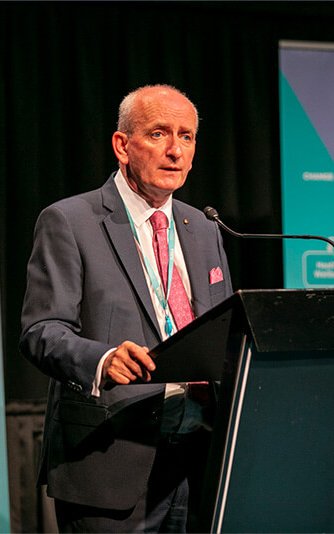
Significant funding of €420 million has been allocated to the Waiting List Action Plan 2025, comprising €190 million for the HSE and €230 million for the National Treatment Purchase Fund (NTPF), which will focus on sustainably reducing the amount of time people are waiting for care.
This year’s WLAP focuses on reducing waiting times for scheduled care and sets out four key targets aimed at achieving this objective, namely:
- Having 50% of patients waiting less than the Sláintecare wait time targets (i.e. 10 weeks for outpatients (OPD) and 12 weeks for inpatient and day case (IPDC)) by the end of 2025.
- Reducing the weighted average wait time for scheduled care to 5.5 months.
- Increasing the proportion of OPD patients waiting less than 12 months to 90% by the end of 2025.
- Reducing the proportion of patients waiting over 24 months, or at risk of waiting over 24 months by the end of 2025, by 90% this year.
- The WLAP 2025 takes account of the new Regional structures within the Health Service Executive (HSE) and the ongoing transition towards a more integrated model of care delivery, in that the national WLAP will be underpinned by specific Regional commitments in terms of activity, productivity and reforms. This new approach will afford each of the Regional Executive Officers flexibility in terms of the specific actions they prioritise, in order to support the achievement of the overarching national targets contained in the WLAP 2025.
In relation to the WLAP, Bernard Gloster, CEO of the HSE said:
“The Waiting List Action Plan 2025 is a critical step in addressing the challenges our health service faces head-on. This Plan outlines a multi-faceted approach to reducing waiting times, enhancing capacity, and streamlining processes to ensure we are not only meeting the immediate needs of patients, but also preparing for future demands. It builds on the efforts of the past, recognising the progress we have made, while acknowledging the work still to be done.”
The Department of Health said, “Significant progress has been made through the action plan to reduce waiting times in our acute hospitals. Since the commencement of the WLAP approach in September 2021, there has been an almost 64% reduction in the number of long waiters (i.e. those patients waiting over 12 months) up to the end of December 2024. This equates to over 179,000 people.
“ The waiting time reductions achieved under the WLAP approach demonstrate sustained progress towards our ultimate goal of achieving the maximum waiting times set out in the 2017 Sláintecare report, e.g. 10 weeks for OPD and 12 weeks for IPDC. Since September 2021, there has been a c. 25% reduction in the number of people on the waiting list who are waiting longer than the Sláintecare targets. This equates to approximately 148,800 less people breaching these targets.
“As of December 2024, the percentage of patients waiting less than the Sláintecare wait time targets stood at approximately 35%. Through the successful implementation of WLAP 2025, the aim is to improve this proportion to 50% by the end of this year.
“With the 2025 WLAP, the Department of Health, the HSE and the NTPF are aiming to progress towards the ultimate vision of a world-class public healthcare service in which everyone has timely and transparent access to high-quality scheduled care, where and when they need it.”
The Department of Health also made the following points:
- “Last year, under the WLAP approach, there was a c. 12% reduction in the total number of patients waiting over 12 months since December 2023, and a corresponding reduction of c. 20% in the number waiting over 18 months. As a result of these improvements, as of the end of December 2024, approximately 85% of all patients who were waiting for care at the start of 2024 have been removed from the waiting list.
- “In terms of patients waiting longest, at the end of December 2024, the number of patients waiting or at risk of waiting over 3 years had decreased by over 73% (c. 25.0k) patients since January 2024.
- “Since the introduction of the first WLAP, there have also been decreases in the average length of time that patients have spent on hospital waiting lists.
- “The weighted average waiting time for OPD reduced from 12.8 months in September 2021 to 6.8 months at the end of December 2024. This represents a decrease of approximately 47%.”
- “Over the same period, the weighted average waiting time for IPDC decreased from 9.1 months to 6.0 months – a c. 34% fall.
- “While for GI Scopes, the weighted average waiting time fell from 6.9 months to 2.7 months – a c. 61% decrease – during that period.
- “The improvements in waiting times, delivered through the WLAP approach, have been achieved against the backdrop of increased demand for scheduled care services. Last year, there were 1.814 million people added to hospital waiting lists, which was just over 2% more than projected, which equates to approximately 39,500 people. However, the recent trend of year-on-year increases in health service activity and in the numbers of patients being treated continued last year. During 2024, 1.812 million people were removed from acute hospital waiting lists, which was in line with the projections in the WLAP.”

